|
Monocacy Page8 Photos/text this page courtesy of Craig Swain, Leesburg, VA For any use of these photos contact Webmaster |
||
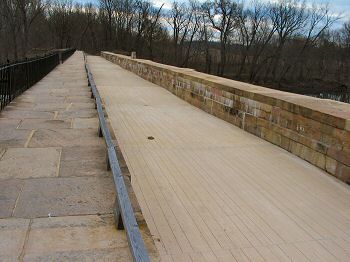 |
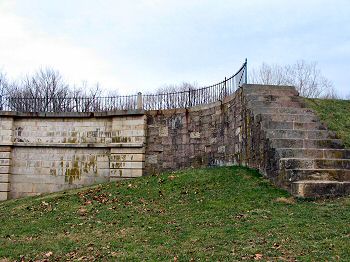 |
|
|
(November 2007) Enlarge The waterway of the aqueduct is a trapazoid shape, to conform with the canal's shape. The bottom is 19 feet wide and the top is 20 feet wide. An eight foot wide towpath runs the length of the downstream (south) side of the aqueduct. In operation, this portion of the aqueduct was filled with water, affording a "bridge" for the canal over the Monocacy River. Civil War Trails signs at the aqueduct detail Confederate attempts to place it out of operation in 1862. First in September 4-5, General D.H. Hill's division attempted destroy the structure. Convinced by Lockkeeper Thomas Walter, that breaching the earth banks of the canal adjacent to the aqueduct would drain the water path and thus achieve the same ends without an inordinate expenditure of labor, Hill would spare the aqueduct. However his forces would damage the Spink's Ferry Lock (No. 27) and a culvert over the Little Monocacy nearby to further disable the canal |
(November 2007) Enlarge The massive abutments at both ends of the aqueduct in some part saved it from the Confederate attempts to destroy the structure, and later the ravages of storms and floods. At some points, the stonework is ten feet thick! On September 9, General John G. Walker arrived with his command with orders from General R.E. Lee to destroy the aqueduct. Reporting the effort would require heavy equipment and additional tools, Walker abandoned the effort and quickly moved his command across the Potomac at Nolan's Ferry in route to Loudoun Heights and the siege of Harpers Ferry. Thus the second attempt to destroy the canal also failed |
|
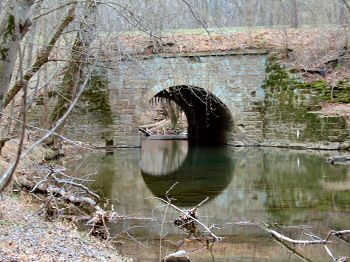 |
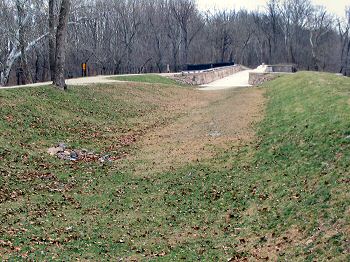 |
|
|
(November 2007) Enlarge The Little Monocacy Culvert was damaged by General D.H. Hill's forces |
(November 2007) Enlarge East side approach to the aqueduct. The photo was taken near a turning basin that allowed for staging of barge traffic passing through the point here |
|
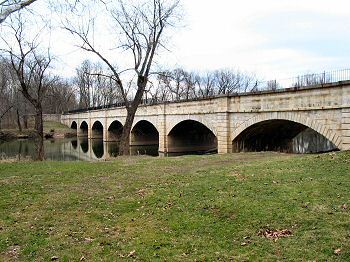 |
||
|
(November 2007) Enlarge
The aqueduct was badly damaged in floods caused by Hurricane Agnes in
1972. Braced with steel frames for many years, in 2005 the aqueduct was
finally repaired to its original form and stands today an example of
engineering marvels of its time |